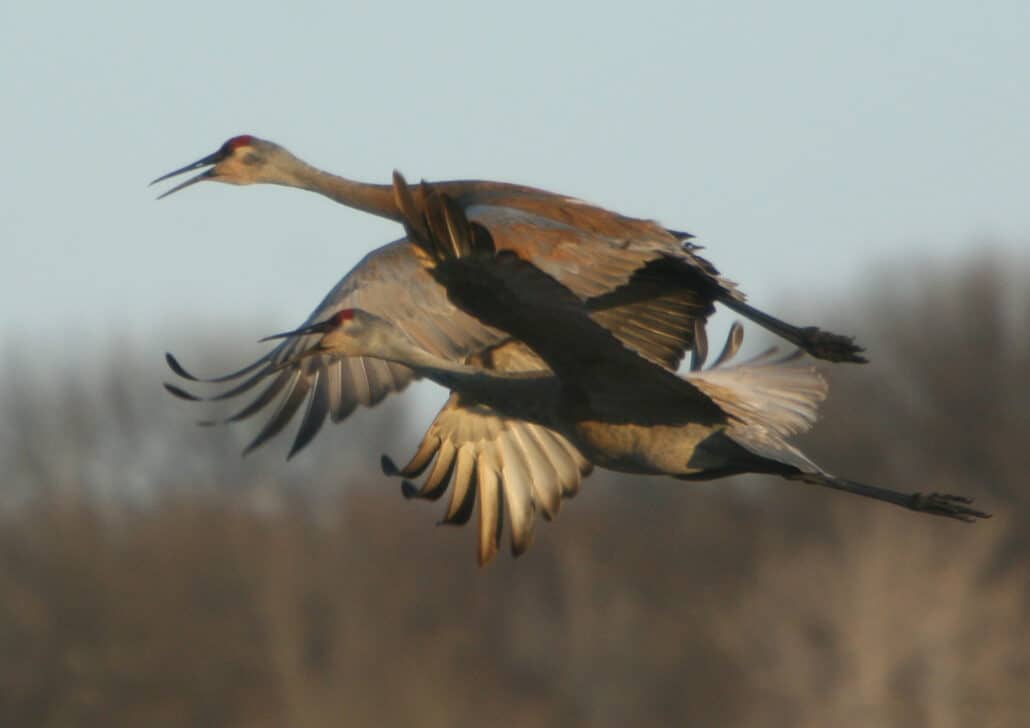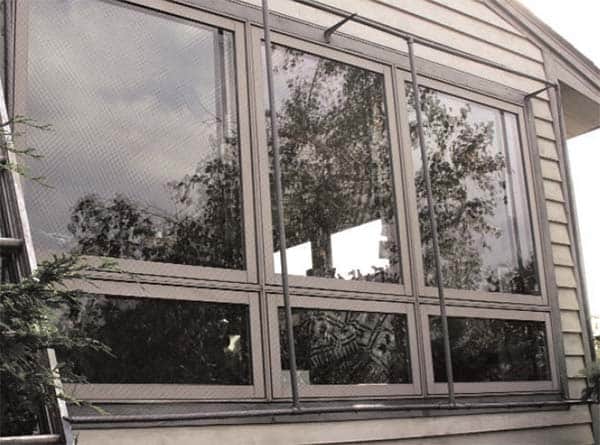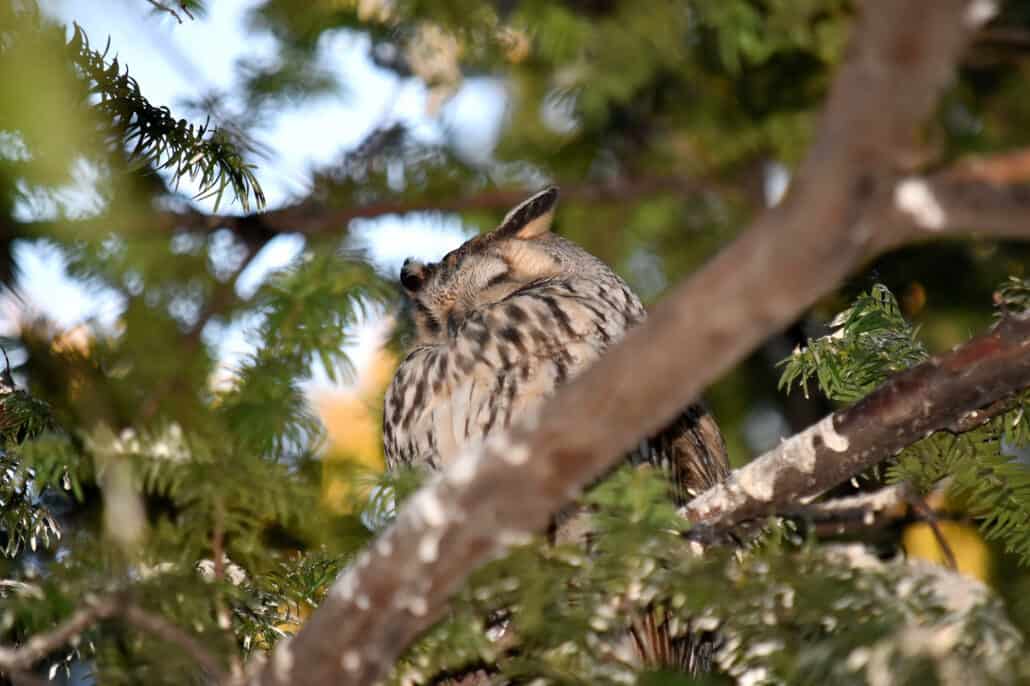If all bird watchers simply performed one of these solutions, we would still save the lives of millions of our favorite birds each year.
How to Do More for Birds
It’s a satisfying feeling to fill the bird feeders in our backyards—seed for the cardinals, blue jays, and tufted titmice; suet for the woodpeckers; thistle for the finches. And the birdbaths as well. That clean water and readily available nourishment can make all the difference to our backyard birds in a much-altered environment.
As beneficial as such actions are, however, many of us yearn to do more for birds. Sure, there is always a habitat restoration project that could use a helping hand, but not everyone lives in a location where this is possible or is able to do physically demanding work. Many people just want to quietly do things for birds in their homes and backyards.
Fortunately, there are many things we can do in our daily lives to make a difference for birds.
Drink Shade-grown Coffee
For example, if you’re a coffee drinker, you can buy organic, shade-grown coffee grown on farms that maintain valuable habitat for birds. Since the 1970s, the planting of hybrid coffee plants that are more sun tolerant, more compact, and yield more beans per acre has denuded large swaths of land in the Neotropics. Such “sun-coffee” plantatios have 95 percent fewer species of birds than traditional shade farms do.
Not surprisingly, populations of many of the 150 species of birds that use shade trees for food and cover—including cerulean warblers and Baltimore orioles—have declined sharply. In addition to supporting fewer trees, sun coffee also requires more herbicides, pesticides, and fertilizers than traditional cultivation. None of these chemicals do anything positive for birds.
Older, shade-grown varieties of coffee better retain and nourish the soil, discourage weed growth, may reduce pathogen infection, protect the crop from frost, and help increase numbers of pollinators. Because coffee grown under the shade of trees takes longer to ripen, many believe it tastes better—the long ripening time contributes to the development of complex flavors.
It may cost a little more, but knowing that you have helped preserve habitat used by our migrating birds on their wintering grounds in Central and South America will make that latte taste all the better. A quick search on the web will put you in contact with a variety of shade-grown coffee distributors.
Keep Cats Indoors
Another easy thing bird lovers can do at home is simply keep their cats indoors year-round. Not only is this better for birds, it is also better for cats. Studies have shown that free-roaming cats typically live less than 5 years, whereas indoor cats can live 17 or more years.
Feral and outdoor cats kill hundreds of millions of birds each year. Studies show vastly variable predation rates, ranging from 5.6 birds killed per cat per year to 109.5 kills per cat per year. Multiplying even the lowest of these rates and using the most conservative figure for the number of outdoor and feral cats in the United States (95 million) yields 532 million bird kills annually.
The misguided feeding of feral cats only makes the problem worse, leading to higher densities of cats than of native predators. Birds that are the most vulnerable to these introduced predators include those that nest or feed near the ground, exhausted migrants, colonial-nesting seabirds, and island species that evolved without mammalian predators.
Cat predation has helped cause the extinction of at least 33 island bird species worldwide—Hawaii’s remaining birds are at particular risk. Cats also prey on many birds listed on the Endangered Species Act, including the California and light-footed clapper rails, piping plover, Florida scrub-jay, and California gnatcatcher.
If it is impractical to keep your cat indoors all year, you can still achieve a real difference by keeping it indoors during bird-breeding season. A recent study published in the January 2011 Journal of Ornithology looked at the effects of urbanization on the early lives of gray catbirds in three Washington, D.C., suburbs and found that almost 80 percent of mortality was from predation. Cats were the source of almost half of the known predation.
Cut Down on Use of Pesticides
Cutting down on your use of pesticides both indoors and outdoors can also help the cause of bird conservation. Five billion pounds of pesticides are applied worldwide annually, with about 10 percent of that in the United States. The American Bird Conservancy and U.S. Environmental Protection Agency have documented more than 2,500 incidents of bird kills attributed to pesticide use.
Most of those cases involved pesticides that were used legally and according to label instructions. Unfortunately, all but the largest-scale bird kills go unnoticed by people, including home-owners, because for the most part we are not actively looking for dead birds. Birds often hide when they are sick, their small size makes them hard to find, and scavenging predators remove most carcasses within 24 hours.
Pesticide exposure can often harm birds without killing them. Sublethal effects include disorientation during migration, reduced ability to maintain weight, impaired territory defense, decreased ability to avoid predators, and reduced care of young. Some insecticides that paralyze the nervous system of target insects also have the same effect on birds.
In a study of white-throated sparrows, 20 percent of birds living in a forest sprayed with fenitrothion—a pesticide used to control spruce budworm (Choristoneura fumiferana)—died or disappeared. Survivors showed a 20 to 50 percent reduction in an enzyme critical to their nervous system. Also, white-throated sparrows in the treated forest produced 75 percent fewer young.
Pesticides often kill non-selectively. As a result, beneficial, nontarget insects that are key food sources for birds may also be killed.
As a homeowner, there are several actions you can take to reduce pesticide use.
- Plant more native trees and shrubs. They provide excellent bird habitat and oftentimes require little or no pesticide treatments.
- Where possible, purchase foods grown organically—particularly corn, alfalfa, wheat, and potatoes, all of which are often grown using large amounts of pesticides that can be harmful to birds. Remember that supermarkets respond to consumer demand.
- Avoid buying non-organic foods from Central and South America until pesticide use in these countries is changed. More pesticides are used per acre for bananas than for just about any other crop, and residues of more than 50 pesticides are allowed on imported bananas. Organic bananas are widely available.
- Rather than spraying your yard with pesticides to kill adult mosquitoes, concentrate instead on eliminating places where mosquitoes can breed. These include unused plant pots, car tires, wheelbarrows, and even small puddles. Change your birdbath water every other day, and if you have a fishpond, treat it with an organic larvicide to kill the mosquito larvae.
- Avoid using rat poisons, as these can lead to the deaths of birds of prey that eat the poisoned rats. Instead, try to eliminate the cause of the rat problem, such as poorly stored birdseed or food. If you must use poison, do not use any old stocks you may have that are loose in packets. All new rat poisons are sold in bait stations that limit the unintended poisoning of wildlife.
Prevent Window Strikes
Another key bird conservation action that homeowners can undertake is to reduce bird collisions with windows. Between 300 million and 1 billion birds die each year from collisions with glass on buildings, often at residential homes. The problem exists because birds cannot perceive transparent or reflective glass as a barrier and thus fly into it. Sometimes death is instantaneous, but other times the birds fly away only to die from injuries or at the jaws of a predator in some other location.
Actions that backyard bird watchers can take to reduce bird collisions with glass include the following:
- Identify which windows around your home are most reflective and target them for reflection mitigation.
- Apply tempera paint patterns to the outside of your windows. They will hold up to rain but will come off easily with a wet sponge.
- Apply tape, such as duct tape or chart tape, to create patterns.
- Apply outdoor window films, which come in various colors and patterns, to reduce reflectivity.
- You can also use window decals, but for maximum effectiveness they need to be applied more closely than most manufacturers recommend—about 2 inches apart.
- Lastly, if you don’t want to apply anything directly to your windows, consider installing lightweight netting, screen, or other material over them. You will need to place it about a foot in front of the windows to prevent the birds from hitting the glass.
It would be great if all bird watchers implemented all of these solutions—chose shade-grown coffee, kept their cats indoors, reduced their pesticide use, and treated their windows to reduce collisions. But if all bird watchers simply did one of them, we would still save the lives of millions of our favorite birds each year. So the next time you fill up your feeders and birdbaths and you have that notion of wanting to do more, give one of these tips a try. You’ll be making a difference.




